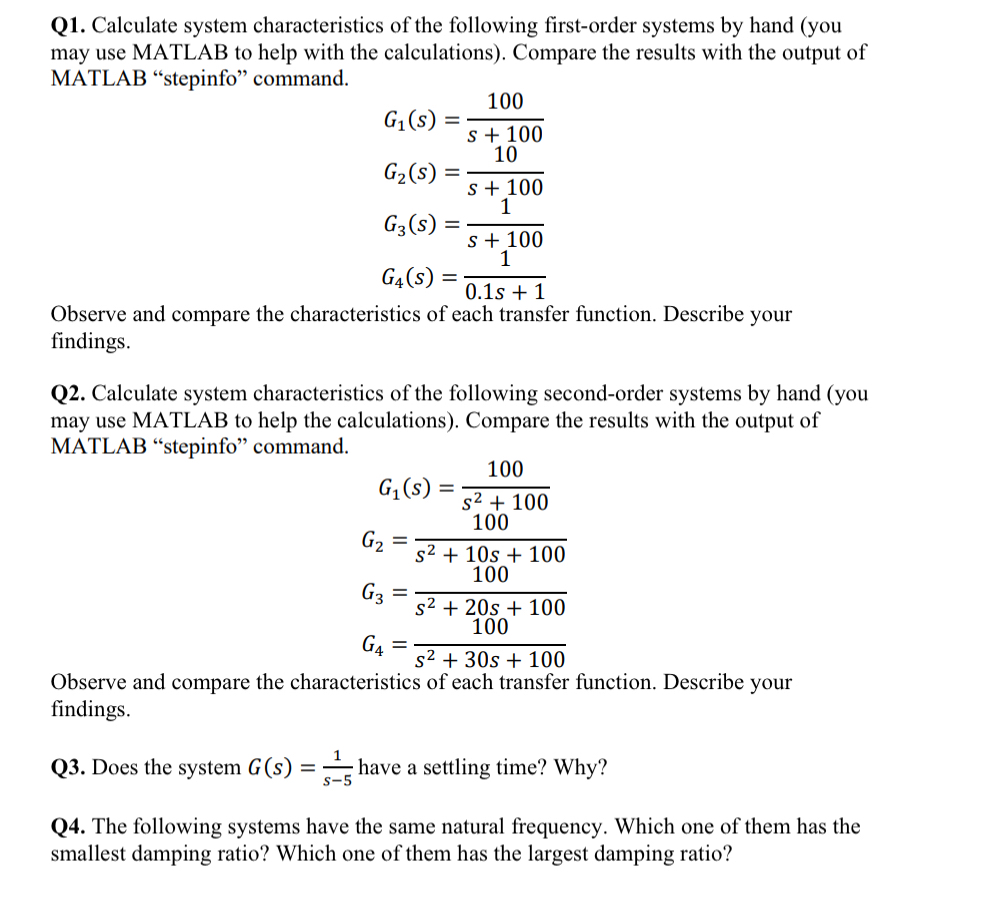Question
Q1. Calculate system characteristics of the following first-order systems by hand (you may use MATLAB to help with the calculations). Compare the results with the
Q1. Calculate system characteristics of the following first-order systems by hand (you may use MATLAB to help with the calculations). Compare the results with the output of MATLAB "stepinfo" command.\
G_(1)(s)=(100)/(s+100)\ G_(2)(s)=(10)/(s+100)\ G_(3)(s)=(1)/(s+100)\ G_(4)(s)=(1)/(0.1s+1)\ Observe and compare the characteristics of each transfer function. Describe your findings.\ Q2. Calculate system characteristics of the following second-order systems by hand (you may use MATLAB to help the calculations). Compare the results with the output of MATLAB "stepinfo" command.\
G_(1)(s)=(100)/(s^(2)+100)\ G_(2)=(100)/(s^(2)+10s+100)\ G_(3)=(100)/(s^(2)+20s+100)\ G_(4)=(100)/(s^(2)+30s+100)\ Observe and compare the characteristics of each transfer function. Describe your findings.\ Q3. Does the system
G(s)=(1)/(s-5)have a settling time? Why?\ Q4. The following systems have the same natural frequency. Which one of them has the smallest damping ratio? Which one of them has the largest damping ratio?

Step by Step Solution
There are 3 Steps involved in it
Step: 1

Get Instant Access to Expert-Tailored Solutions
See step-by-step solutions with expert insights and AI powered tools for academic success
Step: 2

Step: 3

Ace Your Homework with AI
Get the answers you need in no time with our AI-driven, step-by-step assistance
Get Started


